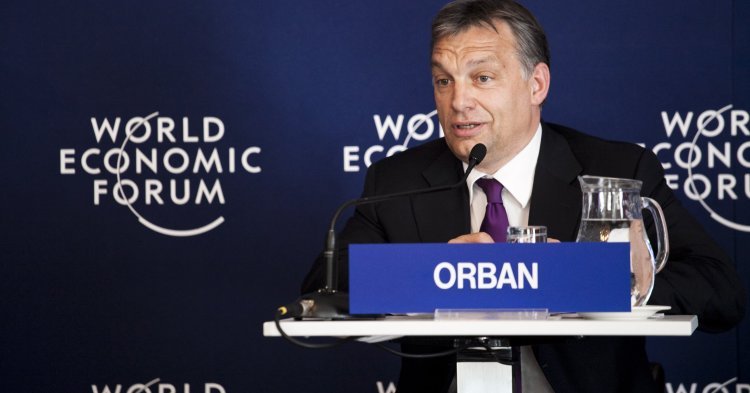According to Hungarian Prime Minister Viktor Orbán, each EU member state should have the ability to decide whether to apply the death penalty or not, because life sentences have not been sufficient to deter criminals. Orbán’s argument is peculiar: he claims to be in favour of life, and when people are threatened by someone, their life needs to be defended (so far so good). This defence, however, should include the death penalty assuming that no major crime would be committed anymore and perpetrators truly would be brought to justice by paying with their lives (not so humanistic anymore).
Debate stimulated by brutal murder
Hungary abolished the death penalty in October 1990 in its transition from a socialist country to get ready to integrate into western European institutional structures. However, the debate about the death penalty has surged afterwards in various countries around Europe, including Hungary. Orbán himself first suggested in 2002 the reintroduction of the death penalty. The brutal murder in April 2015 of a young saleswoman in a tobacco shop in Kaposvar motivated Orbán to readdress the issue. As the murder made the headlines in Hungary, the prime minister thought to make political capital out of it.
When criticism in the rest of Europe was mounting, a government spokesman tried to downplay Orbán’s words. Hungary and the prime minister want to adhere to international law, it is only the Hungarian citizens and voters that want to have a conversation about it. It is that kind of populist rhetoric that fuels the debate inside Hungary because the very government suggests that it is just a democratic exercise to debate the feelings of many citizens, whereby it does not matter if it is based in the wider human rights canon.
An eye for an eye and a tooth for a tooth
When Orbán thought out loud that it might be necessary to re-introduce the death penalty after the murder case, he also looked to opinion polls showing that almost 50% of Hungarians are in favour of death penalty. According to him, every country in Europe should have the sovereignty to decide how to go about capital punishment. Like in the US, every state should decide about it. What Orbán still ignores is that the European Union is not just an economic union but also a value-based organisation that includes fundamental questions about human rights.
Orbán’s argument is based on the claim that many people would feel that they are safer when there is the threat of death penalty to certain crimes and it would be important to consider what the people think. While it is certainly important to listen to people and take their concerns seriously, Orbán makes conclusions that are outside the European legal and moral framework. It is the age-old an eye for an eye and a tooth for tooth principle.
The legal framework
Although 36 countries around the globe still practice the death penalty, there are very few liberal democracies among them (with the exceptions of Japan, South Korea and the United States). Study after study has shown that the death penalty does not achieve its goal – to scare people not to commit a certain crime – nor does it seem right that the justice system is committing a crime. Amnesty International shows how biased the death penalty is against racial, ethnic and religious communities. The US-based civil rights group ACLU points out how many erroneous decisions have been taken by judges – in a question that is literally about life or death.
The legal perspective in Europe about the death penalty is clear: Orbán’s announcement is clearly violating the EU Charter of Fundamental Rights that went into force with the Lisbon Treaty in 2009 (although two countries have an opt-out protocol: Poland and, of course, the United Kingdom). The Charter of Fundamental Rights prohibits in article 2 that any person is condemned to death or execution. Also it needs to be mentioned that the European Convention on Human Rights is embedded within the institutional framework of the Council of Europe, particularly with Protocol No. 6 that calls for abolishing the death penalty.
The European Court of Human Rights has ruled since 1989 on a continuous basis that the death penalty is actually a deliberate and premeditated destruction of a human being by the state. Consequently, death penalty should not be used. In fact, the use of the death penalty in Belarus is one of the reasons why this Eastern European country is not part of the Council of Europe (next to concerns about the general human rights situation and its democratic practices).
Reactions inside the EU
The reaction in Europe was unified in its total rejection. Whether Jean-Claude Juncker, Martin Schulz, Federica Mogherini or the heads of state: the death penalty is not going to be discussed, it would not be negotiable because it is part of key EU values as it is part of the treaties. Juncker warned Orbán that this would be a “fight” when Hungary really should push the issue and Europe would not give in to populists. In fact, the European Commission could start a case against Hungary according to article 7 of the EU Treaty, although that would be a last resort.
What is the reaction of Orbán’s conservative counterparts in Europe? So far, other leaders that are part of the European People’s Party (EPP), like Angela Merkel or MEP Elmar Brok have condemned this initiative. The irony is that Orbán’s party Fidesz is still part of the EPP in the European Parliament. However, neither Merkel nor Brok were able to link this condemnation to a threat to expel Fidesz from the EPP. Therefore, the EPP would need to finally to come to a consensus whether or not they have a common strategy. Considering though how the EPP treated Berlusconi’s party “Forza Italia,” there is little expectation that the EPP will make a decisive move.
Strategy behind Orbán’s move
The strategy of Orbán seems to be a political one. In the last elections in April 2014, Fidesz defended its two-thirds majority, although during the past year, it has continuously lost support. Jobbik, the extreme-right party is gaining ground while Fidesz is losing in the polls. It surely must be worrying that only 29% of Hungarians think their government is doing a good job. As Jobbik continues to pressure Orbán with right-wing messages, the Hungarian government feels that it is necessary to give-in and allow for greater populism. Any consideration of basic European values does not matter much in comparison.
In fact, the proposal to put the death penalty on the agenda is not the only worrying initiative in Hungary. At least five concerning tendencies can be observed from the past years: 1) changes to the constitution that “undermine the rule of law and human rights,” 2) the new laws about the media that threaten the survival of media outlets critical of the government, 3) the announcement to make Hungary an “illiberal state” that should be based on the leadership style of Putin’s Russia, Erdoğan’s Turkey, and China’s one-party system, 4) the initiative to control “foreign influence” on civil society that is described as a “crack down” of NGOs, and 5) the recent survey that was sent out to eight million citizens asking, in a very leading manner, if the Hungarian government should detain illegal immigrants.
All of these five points, and furthermore the latest proposal with the death penalty suggest that Hungary is already outside Europe. To be more precise, Hungary is neither geographically nor institutionally outside of Europe, but ideologically seems to drift away with every day Orbán is in office. For Orbán himself, this seems to be a deliberate strategy to offer a new political model inside the heart of Europe. By playing with the fears and anger of common Hungarians, Orbán hopes to gain political ground. It is tempting for him to portray to the Hungarian public the perceived choice that there is either the death penalty or no punishment at all. However, as Bryan Stevenson points out, “the other” is reduced to something that is not part of us, thus it can be killed: “If it’s not right to torture someone for torture, abuse someone for abuse, rape someone for rape, then how can we think we can kill someone for killing?”
Conclusions
The death penalty is not the way forward to solve horrendous crimes. Europe must continue to be a space where there is a common belief in people’s ability to change. The ancient “eye for an eye” principle will not solve crime. It will be solved through structural changes that are necessary more than ever, particularly addressing the social dimension of the current crisis.
Orbán knows that he will not succeed with this initiative, but that is not his point. He needs more popularity within Hungary and thinks that debating the death penalty will provide him with public support and a surge in opinion polls.
A prime minister inside the EU who wants to reintroduce death penalty should leave the European Union. However, when Hungarians still want to be part of the EU, it might be better for Orbán to leave office.


Follow the comments: |
|
